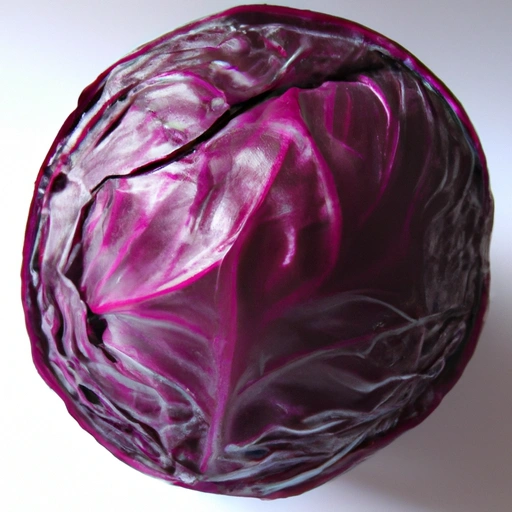Red Cabbage
Description

Red cabbage, also known as purple cabbage, is a leafy vegetable that belongs to the Brassica family. This cruciferous vegetable is known for its vibrant color, which ranges from deep purple to maroon, and its slightly peppery flavor. Red cabbage is a staple ingredient in many cuisines and is celebrated for its versatility and nutritional profile. As a global ingredient, it is measured in various units, including ounces (oz), pounds (lb), grams (g), and kilograms (kg) for weight, and cups, tablespoons (tbsp), and milliliters (ml) for volume.
Common uses
Red cabbage is commonly used to add color and crunch to salads, slaws, and sandwiches. It is also a popular pickling ingredient and is often fermented to create dishes like sauerkraut and kimchi. Moreover, red cabbage can be braised, stewed, or roasted, making it a versatile component of warm dishes, especially during the colder months.
Nutritional value
Calories
Red cabbage is low in calories, with approximately 28 calories per 100 grams (3.5 oz).
Protein
It provides about 1.3 grams (0.045 oz) of protein per 100 grams.
Fat
Red cabbage is virtually fat-free, containing less than 0.1 grams (0.0035 oz) per 100 grams.
Carbohydrates
It has about 7.4 grams (0.26 oz) of carbohydrates per 100 grams, of which 3.8 grams (0.13 oz) are dietary fiber.
Vitamins
Red cabbage is an excellent source of vitamin C and also contains vitamins A, K, and B-complex.
Minerals
It is rich in minerals such as potassium, manganese, and calcium.
Health benefits
Red cabbage is renowned for its high antioxidant content, including anthocyanins and vitamin C, which can help combat oxidative stress and reduce the risk of chronic diseases. The dietary fiber in red cabbage supports digestive health, while the potassium content helps maintain healthy blood pressure levels. Its nutrients are also beneficial for immune support and bone health.
Potential risks
While red cabbage is generally safe for consumption, it contains vitamin K, which can interact with blood-thinning medications like warfarin. Individuals on such medications should monitor their red cabbage intake to avoid potential complications. Furthermore, excessive consumption of cruciferous vegetables may cause bloating or gastrointestinal discomfort for some individuals.
Common recipes
Red cabbage is often found in recipes such as coleslaw, braised red cabbage with apples, red cabbage salad, and fermented dishes like sauerkraut. It is also used as a colorful garnish.
Cooking methods
Red cabbage can be eaten raw, sautéed, pickled, braised, or roasted. It is also suitable for slow-cooking methods, which bring out its sweetness.
Pairing with other ingredients
This vegetable pairs well with ingredients like apples, vinegar (such as acetic acid or 'azjan'), onions, pork, and robust spices. It also complements creamy dressings and tangy vinaigrettes.
Summary
Red cabbage is a nutritious and colorful addition to a variety of dishes. Its health benefits and culinary flexibility make it a favorite among cooks globally. Whether used in traditional European dishes, tangy American slaws, or Asian-inspired ferments, red cabbage offers a unique flavor profile and a host of nutritional advantages.